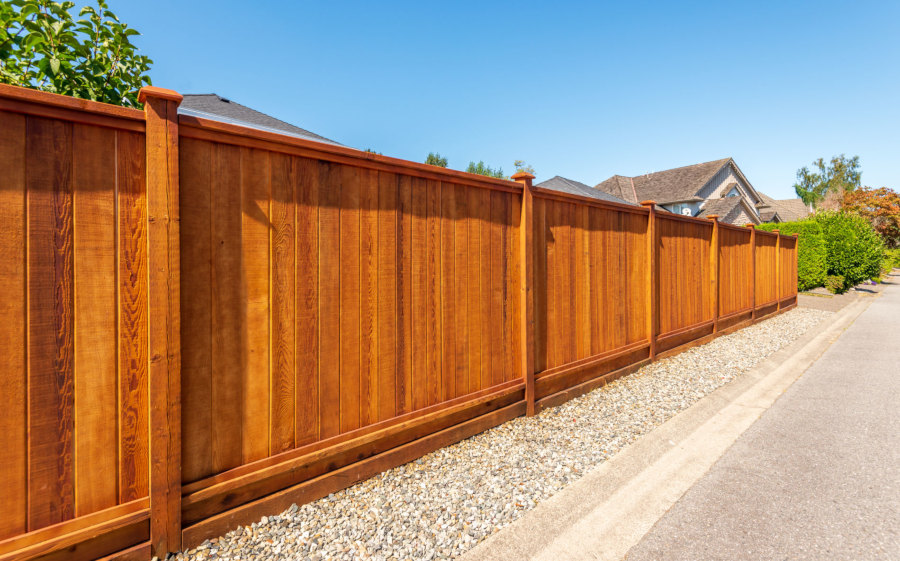Specialist Fence Staining Service: Shield and Beautify Your Residential property!
Specialist Fence Staining Service: Shield and Beautify Your Residential property!
Blog Article
Just How to Choose the Right Fence Spot for Your Building
When it concerns boosting the look and sturdiness of your home's fencing, choosing the appropriate discolor is an important choice that needs mindful consideration. With a myriad of alternatives readily available out there, each satisfying different timber types, shades, and openness levels, the procedure can quickly end up being frustrating. Making an informed option can dramatically affect the overall appearances and durability of your fencing. So, exactly how can you make certain that you pick the ideal fencing tarnish that straightens with your property's design and maintenance needs? Allow's explore some crucial aspects to lead you in this decision-making process.
Recognizing Wood Kind
To choose the proper fencing stain, it is important to have an extensive understanding of the different types of wood commonly used for fencing. When picking a fencing tarnish, it is vital to take into consideration the kind of wood being used to ensure compatibility and optimal defense. Recognizing the features of various timber kinds will certainly aid you make a notified choice when it comes to picking the appropriate fencing discolor for your residential property.
Picking the Right Shade
Choosing a proper color for your fence discolor is a vital choice that significantly affects the general visual allure of your building. Lighter shades such as whites or light grays can make a fence appear bigger and include a touch of beauty to your home. Ultimately, the right color choice will boost the appeal of your fence and boost the overall visual charm of your home.

Thinking About Transparency Degrees
When selecting the best shade for your fence stain, an additional vital facet to consider is the level of openness that will ideal match your residential property's aesthetic and upkeep demands. Openness levels in fencing spots typically drop into three classifications: transparent, semi-transparent, and solid. Clear stains allow the natural appeal of the timber to show via while providing marginal security versus the aspects. They are ideal for brand-new or properly maintained fences where showcasing the timber grain is a priority. Semi-transparent stains offer a balance in between color enhancement and security, allowing some timber grain to be noticeable while supplying moderate shielding from UV rays and wetness. Solid discolorations, on the other hand, supply the most security as they completely cover the wood with an opaque coating. These appropriate for older fences or those in need of considerable protection or shade adjustment. Take into consideration the level of direct exposure your fencing faces, the desired upkeep regularity, and the visual you want to accomplish when choosing the ideal openness level for your fence discolor.
Evaluating Upkeep Demands
Thinking about the long life and upkeep of your fence, evaluating the maintenance needs is crucial in determining the most appropriate fencing tarnish for your building. The degree of upkeep needed for your fence can vary depending upon elements such as the type of wood, climate condition in your location, and your personal preferences.
When evaluating maintenance requirements, it is necessary to think about the toughness of the fence tarnish. Some spots need even more frequent reapplication than others, so choosing a discolor with a longer life expectancy can help in reducing the general maintenance demands of your fence (Fence Staining Service). Furthermore, variables such as resistance to UV rays, water, and mold can affect just how usually you require to re-stain your fence

Checking Samples Before Application
Before using any type of fence stain, it is a good idea to perform example tests to make certain compatibility with the wood and desired aesthetic end result. Testing examples allows you to evaluate just how the stain will communicate with the specific kind of wood utilized in your fencing, as different timbers can take in spots differently. To start, pick a small inconspicuous location of the fencing to use the tarnish samples.
Verdict
In conclusion, selecting the appropriate fencing tarnish for your residential property entails recognizing the wood kind, choosing the appropriate color, taking into consideration transparency degrees, evaluating maintenance requirements, and testing examples prior to application (Fence Staining Service). By taking these variables into consideration, you can guarantee that your fence tarnish matches your building while giving the essential protection and durability. Make a notified decision to enhance the look and long life of your fence
Report this page